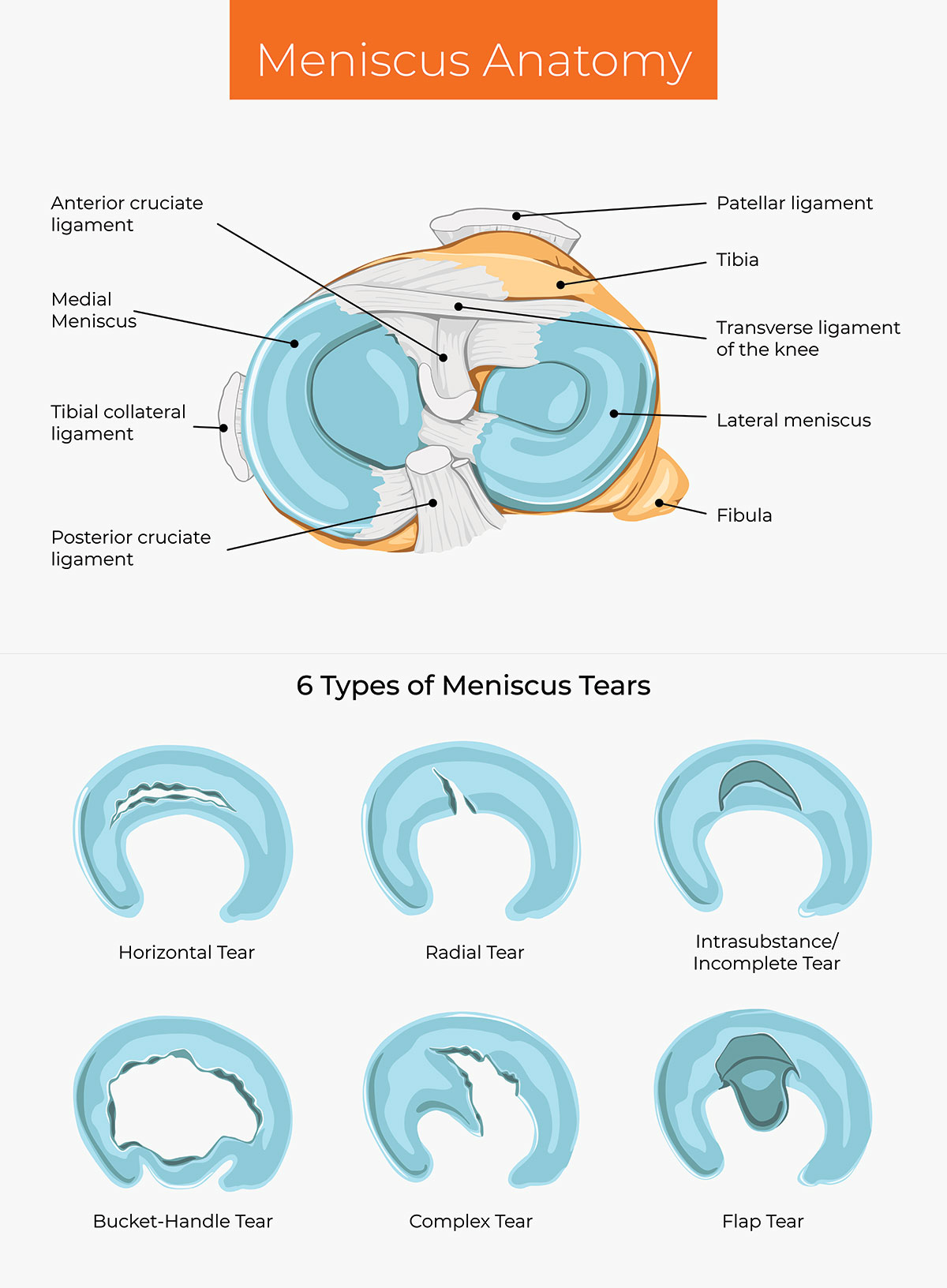Key Pointers:
- Understand what a meniscus tear is and when repair is recommended
- Learn what happens during a meniscus repair procedure
- Explore recovery expectations and when to return to normal activity
- Know the difference between repair and partial meniscectomy
What Is the Meniscus and Why Does It Tear?
The meniscus is a C-shaped piece of cartilage in your knee that cushions the joint and helps absorb shock. Each knee has two, one on the inner side (medial) and one on the outer side (lateral).
Meniscus tears often happen during sports that involve twisting, pivoting, or sudden changes in direction, like football, basketball, or running. As we age, the cartilage can also weaken, making tears more likely from minor movements.
When Is Meniscus Repair Recommended?
Not every tear needs surgery. Small or degenerative tears may heal with rest, physiotherapy, and activity modification. However, repair may be considered if:
- The tear is large or located in a part of the meniscus with a good blood supply
- You’re younger or active and wish to return to sports
- The knee locks, catches, or swells frequently
- Conservative treatment hasn’t relieved your symptoms
During your consultation, the orthopaedic doctor will assess your symptoms and MRI findings before recommending whether repair, trimming (partial meniscectomy), or physiotherapy is most suitable.
What Happens During a Meniscus Repair Procedure?
Meniscus repair is often performed arthroscopically, meaning it’s done through small incisions using a thin camera and specialised instruments. The torn edges of the meniscus are stitched back together to allow healing.
This minimally invasive approach aims to preserve as much of your natural cartilage as possible, helping maintain long-term knee health and reducing the risk of arthritis later on.
What Is Recovery Like After Meniscus Repair?
Recovery varies depending on the size and location of the tear, as well as your overall health and rehabilitation progress. Generally:
- You may use crutches for several weeks to limit weight-bearing.
- Physiotherapy helps restore strength and mobility.
- Most people can return to daily activities within 6–8 weeks, though sports may take longer.
Following your surgeon’s aftercare plan closely is key to successful healing.
Meniscus Repair vs Partial Meniscectomy: What’s the Difference?
Both are performed arthroscopically, but their goals differ:
- Meniscus repair preserves and stitches the torn tissue together for natural healing.
- Partial meniscectomy removes the damaged portion if repair isn’t possible.
Repair is generally preferred when suitable because it maintains knee cushioning, but your surgeon will recommend the approach best suited to your tear and lifestyle needs.
When to See an Orthopaedic Doctor
If your knee pain persists after rest, or if your knee locks, swells, or feels unstable, it’s important to get it checked early. Proper diagnosis helps prevent long-term issues like joint stiffness or early arthritis.
Frequently Asked Questions (FAQ)
1. Can all meniscus tears be repaired?
No. Tears near the outer edge of the meniscus heal better because this area has a stronger blood supply. Complex or inner-rim tears may not be suitable for repair.
2. Is meniscus repair painful?
Discomfort is expected after surgery, but pain can be managed with medication and physiotherapy. The surgical incisions are small, so recovery is generally well-tolerated.
3. Will I be able to return to sports after repair?
Most patients can gradually return to sports after completing physiotherapy, usually within 3–6 months, depending on healing and knee strength.
4. What happens if I don’t repair a torn meniscus?
Leaving a significant tear untreated may lead to chronic knee pain, locking, or early wear of the joint cartilage, which could contribute to osteoarthritis.
5. How do I know if I need surgery or just physiotherapy?
Your orthopaedic doctor will evaluate your symptoms, activity level, and MRI scan results to decide the best course of treatment for you.
Book a Consultation at Liberty Orthopaedic Clinic
If you’re dealing with persistent knee pain or suspect a meniscus tear, don’t wait until it worsens. Book an appointment with Dr Lee Eu Jin, Consultant Orthopaedic Surgeon at Liberty Orthopaedic Clinic, to discuss your treatment options.
Our clinic provides comprehensive care for knee conditions, from accurate diagnosis to tailored treatment and rehabilitation.





